I’d carefully studied the Brule’s current rushing toward me and plotted my next move. I prepared to plant my pole, push off, and break the nose of my canoe out from the calm water eddy where I was resting. It’d take three or four good pole plants to propel myself forward and diagonally to an inside river bend’s calm water just upstream. I’d need a quick pole recovery and second plant to maintain my position and keep the Brule’s strong current from grabbing my bow and spinning me back around downstream. When I felt the pole’s tip grab with a good plant, I dropped my weight against the pole and shot the bow of my canoe across the eddy line and into the river’s main flow. A hand over hand climb to the top of the pool, and then I slid the pole back up through my lower hand like a pool cue, and readied for the next plant. To help maintain the canoe’s angle in the current, I’d positioned my weight to have my bow was riding high, the hull on the upstream side slightly lifted, and I kept my pole plants on the downstream side. Each good plant and push sent me another canoe length ahead, until I slid my bow up onto the sandy protected bank for a well-deserved break.
Thanks to my dad, I’ve been a canoeist for as long as I can remember, but in the last several years, I have been trying new tricks and breaking my mom’s #1 rule: “Don’t stand up in the canoe!”
Canoe poling is an all but lost art form in the Midwest, so my first introduction to it was through old history and outdoor books. Those books more than piqued my curiosity though, and I decided to get hands on training and experience in Maine. Maine, and neighboring areas in Canadian provinces, are the few places in North America where a handful of guides and canoeists keep this ancient practice alive. I took several trips to Maine, to learn about poling, had the chance to practice poling on some awesome wilderness river trips there, made great friends, and brought home a fun and practical new skill to share with fellow canoeists in the northwoods of Minnesota.
“Even in Maine, most of the canoe poling is what I call sport poling, meaning for the fun of it as an end in itself. My friend, Harry Rock, uses the skiing/snowboarding term “shredding” when he plays a particularly gnarly pitch. For wilderness travelers in loaded canoes, it is plenty of fun, but vastly different in approach, technique, teaching/learning, and just about everything. The paddling corollary would be whitewater play-boaters relative to travelers on wilderness rivers in loaded canoes. Same solar system, different planets. Please keep these distinctions present and clear. Scott Oeth is an accomplished poler in both disciplines, which seems to be a rare phenomenon itself.”
Pack a Pole
Canoe poling isn’t as intimidating as it may seem! In fact, there are some real advantages to packing a pole on your next canoe trip:
Photo courtesy of EK.
No Shuttle Required
Solving the shuttle riddle is one of great advantages of canoe poling. It’s not going work on every river due to flow, depth, bottom conditions, and (possibly) your poling skill, but the ability to drop a canoe nearly anywhere along a river’s length, work your way upriver, and then float back down provides a wonderful way to explore rivers and creeks without the complications of shuttle logistics. This independence is especially freeing for anyone who wants to enjoy a solo jaunt on the river.
Poling has also helped group shuttle logistics. On a beautiful summer day, I joined my canoeing buddies in River Falls, Wisconsin for one of our favorite nearby trips, the Kinnickinnic. We split off, they headed to the traditional put-in to float down, and I went straight to the takeout and began climbing the Kinni. It was a challenge to see how far up I could get before I met them floating downstream. When we met, I was happy to have a cold drink and a snack, whip a standing eddy peel-out (Yee-Haw!), and enjoy the ride back down the river. This scheme saved an extra down and back drive on the traditional river shuttle car set-up.
Up River Travel
Using a pole to leisurely glide downriver can be very pleasant. Snubbing down with the setting pole through rocky and rough rapids can be a challenging chess match. While both of those scenarios can also be handled with a paddle, upstream travel is a different story! Using a pole and planting solidly against the river’s bottom and putting your full strength and mass into the pole provides a push against the current that can’t be matched by paddle alone!
These photos show me poling on the Machias River in Maine (photo credit: Traveling Ted).
Control
Can you stop and hold your canoe in perfect position against the current? How about throw ’er into reverse and back up against the flow? A poler can use many paddle type strokes, but can also plant firmly on the bottom, the riverbank, or an exposed rock to gain complete control over the canoe. These days, even among experienced paddlers, there are few canoeists who can really handle a traditional, full-sized, tandem canoe solo. Developing skill with the setting pole allows for this single-handed control. That’s why it was such a prized skill among traditional guides. They would use the pole to position and hold their clients at choice fishing spots on the river. Poling solo in my 16’ Prospector is a sporty outing, and single-handing my 20 footer with a pole is often even easier given it’s stability, but it could be quite a handful to paddle solo!
A few years ago, my pal, Bud, and I were able to benefit from the ability to climb upriver and have complete canoe control, We were getting some coaching from Master Maine Guide, Dan Pellietier in the rock gardens of Kenduskeag Stream near Bangor, Maine. Bud realized that, at some point, his knife had been knocked out of his belt sheath. We turned our canoes around, poled our way back up river, moving from eddy to eddy, and side to side across the river, until Bud spotted his prized knife sparkling on the river bottom!
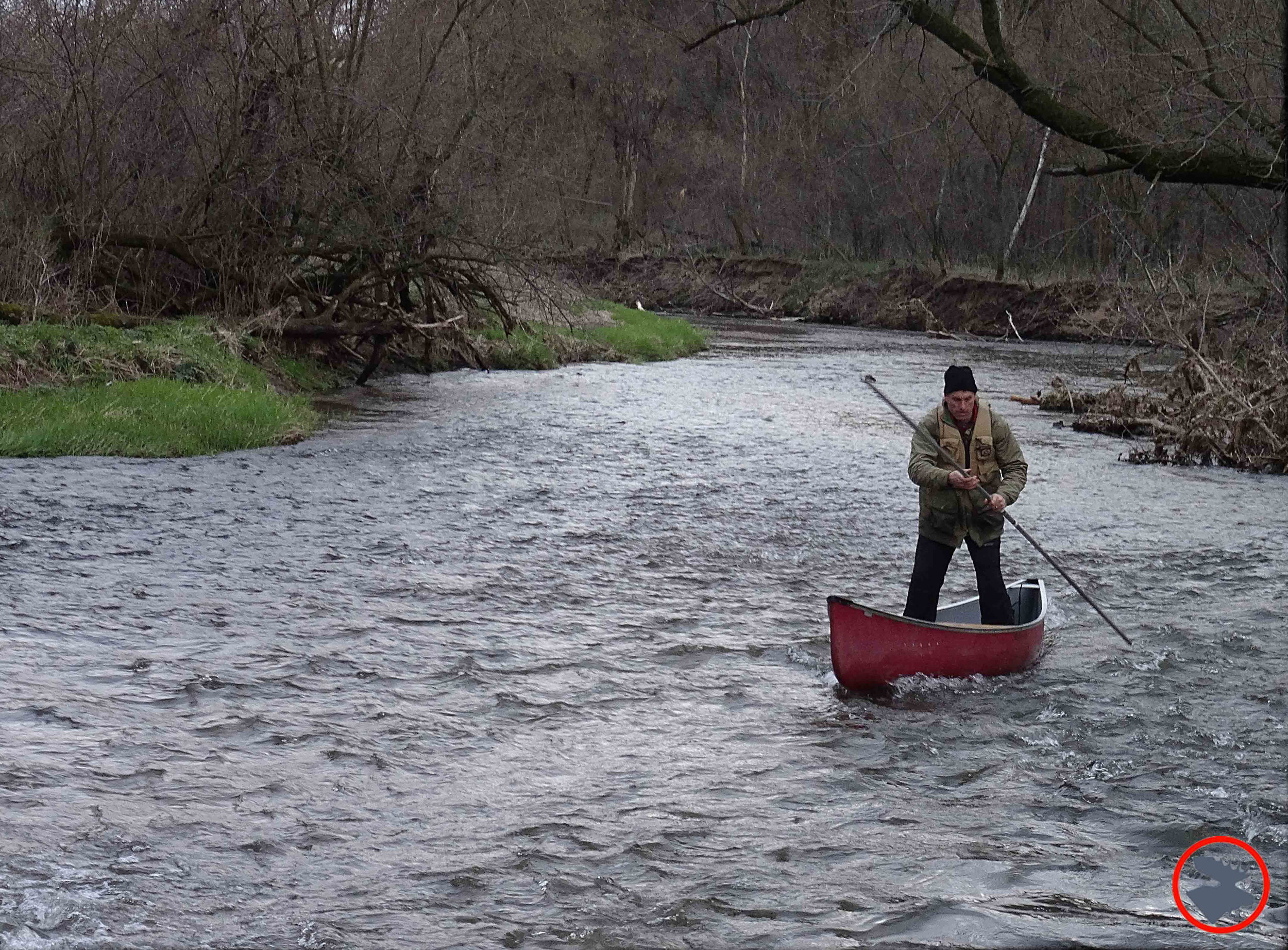
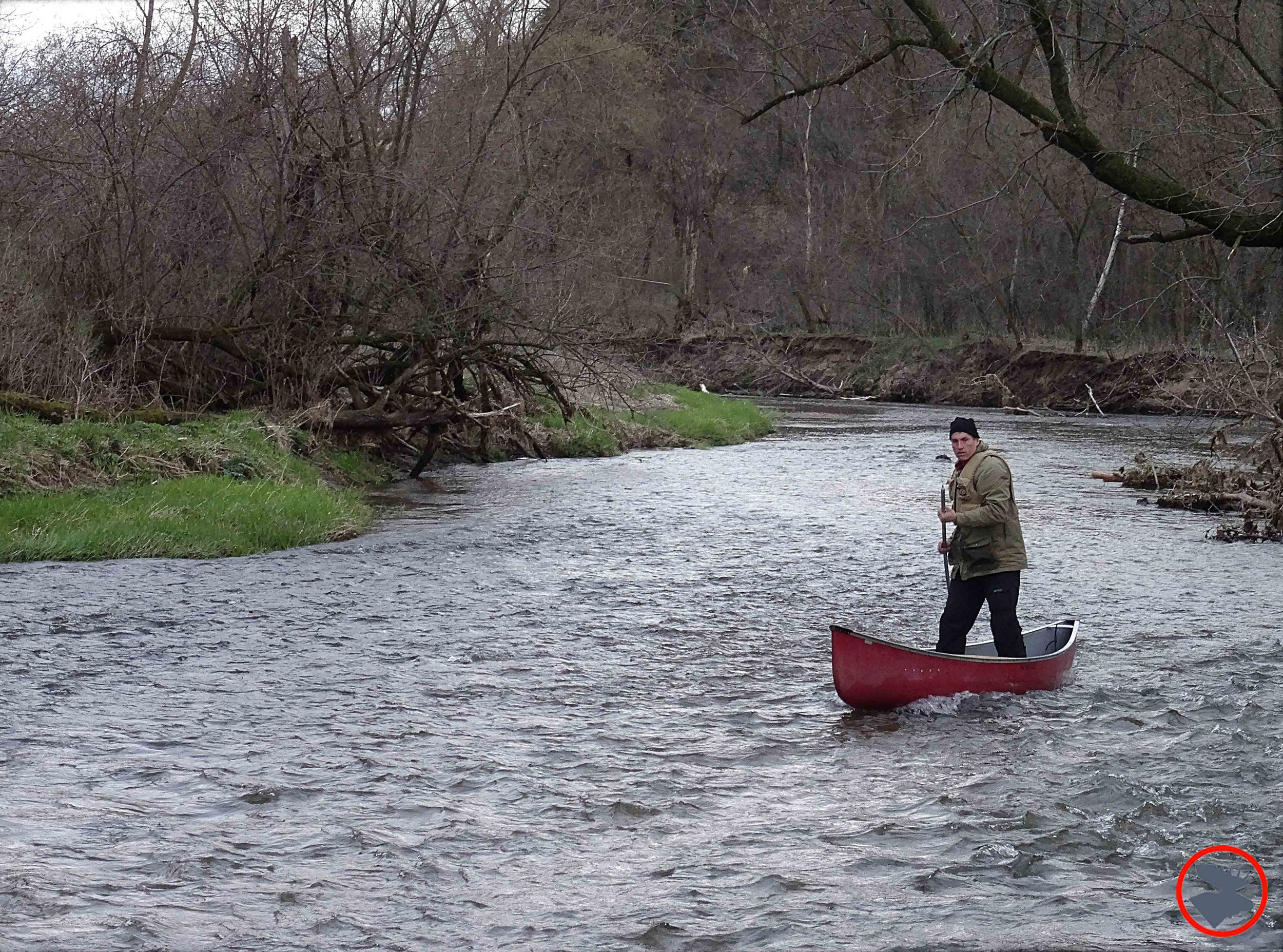
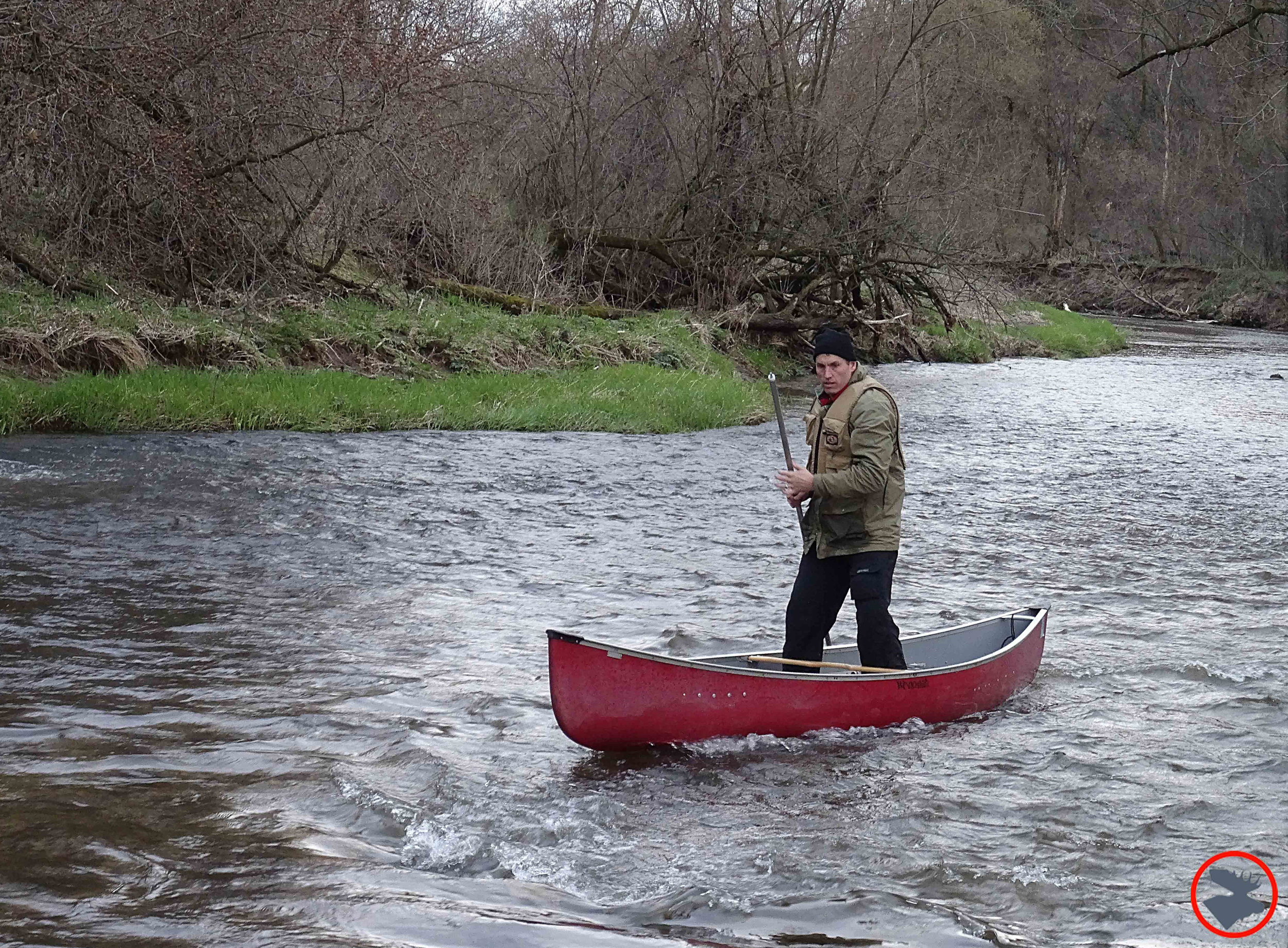
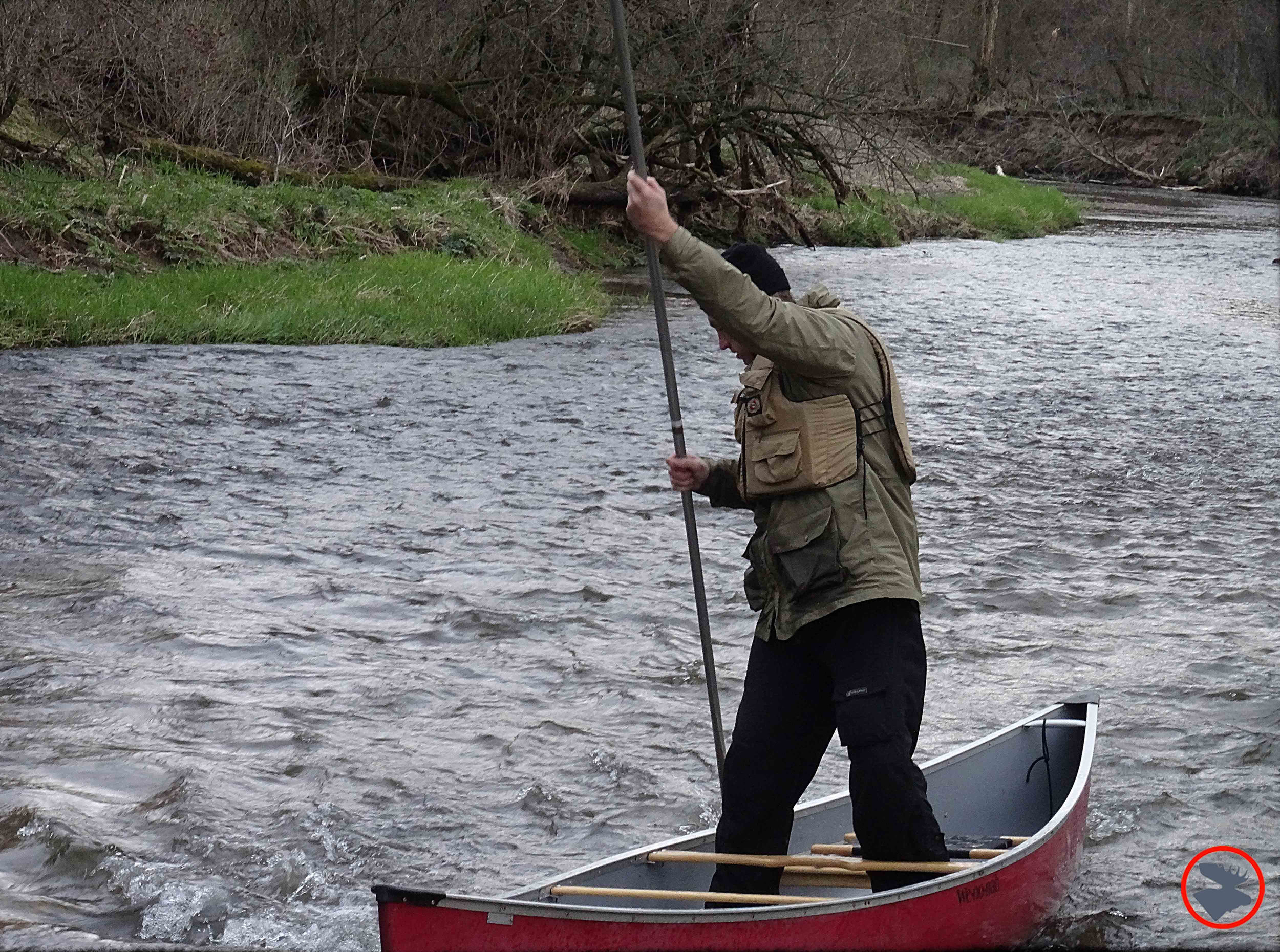
Low Water
While the canoe is an incredibly versatile craft, and a boat that doesn’t need much water to float, paddling at low water levels can be really scratchy. When you’re regularly “catching crabs,” and biting your paddle blade into the river bottom, it’s better to stand up and grab your pole. As long as the canoe can float, you can effectively pole your canoe. The old timers who relied on poling favored long canoes that could “float across the dew on the morning lawn,” allowing them to travel up and down river in the late season when the water was low. While you can take a kayak grip and use a windmill stroke to “paddle” with your pole in deep water, pushing off the bottom starts to be less effective when the water is more than 3’ deep.
Speed
A skilled poler can really cover river miles! The Beletz clan, who championed the sport in the Ozarks until it appears to have died out there, published a book with their time trial studies. They showed polers holding a steady advantage over paddlers. In fact their Canoe Poling book contained in the subtitle “Canoeing’s Fastest Way To Ascend Or Descend Most Streams By Human Power.” Speed is rarely my primary objective in the wilderness, but I’ve been amazed at how fast top competitive polers like Chip Cochrane and Harry Rock can propel their canoe up and down river using the fast windmill crossover stroke! Checkout the American Canoe Association’s canoe poling competitions, and you’ll be amazed as well!
New Perspective/Different Point of View
“No man ever steps in the same river twice...”
Standing gives a considerably different point of view than paddling. Even dedicated paddlers recognize this, it’s not uncommon to see them standing for a better look when approaching a set of rapids. On several of my favorite streams, such as Sand Creek, I’ve noticed that I’m seeing over the river banks as opposed to being within them. You can also frequently see down into the river better when standing, which helps you spot more fish. Now, turn around and head back up river, and you'll really appreciate the new perspective! Time spent studying a river’s flow while hunting for the most efficient path upstream really helps you understand hydrology.
Fitness
As with the paddle, poling can be pleasant and relaxing (hypnotic even!). It can also be a strenuous workout. Efficient poling is about skill using leverage and angles, not brute force, but poling up a fast river can definitely be a physical challenge! A test of strength, stamina, and agility, although without the brains none of it matters, and the river will quickly make a fool of you! Workout aside, sometimes it just feels nice to be able stretch the legs instead of being seated or kneeling the all the time.
With the huge interest in paddlesports for fitness, stand-up paddle boarding in particular, I think poling could be the next new/old fitness boom waiting to explode! Many afternoons last Summer, I’d work my way up a section of the Namekagon, Kinnickinic, or Bois Brule for an hour or two, enjoying the challenge and beauty of these rivers. It was a fantastic workout, and when I was spent, all I had to do was swing the bow around and float back down to my put-in.
History
There is great history associated with the canoe pole. The pole likely pre-dates the paddle in many areas. It was a skill learned and passed on through natives, voyageurs, loggers, and old-time Guides. I’ve always loved history, and part of what I enjoy about the outdoors is a connection to people’s ways of the past.
Fun!
Like many of my favorite outdoor pursuits, I may (attempt to) make rational arguments for or defenses of my approach, but the bottom line is often plain and simple: it’s fun! Poling has been a great addition to my canoeing repertoire. It’s another way to have a great time in a canoe. Poling is a skill that I’ll never fully master, but am hoping to be able to enjoy practicing it for a long time to come!
BMP Poling Presentations and Clinics
I’ve become a bit of a canoe poling evangelist. I’ve given presentations on poling at Canoecopia and Midwest Mountaineering’s Outdoor Adventure Expos, and have conducted on-water clinics for groups, such as the Wooden Canoe Heritage Association. I’m convinced this lost art is long overdue for a comeback in our Great Lakes region. If you’d like me to speak to your group, conduct a clinic, or if you want to join Bull Moose Patrol for a wilderness trip and give canoe poling a try, just let me know!




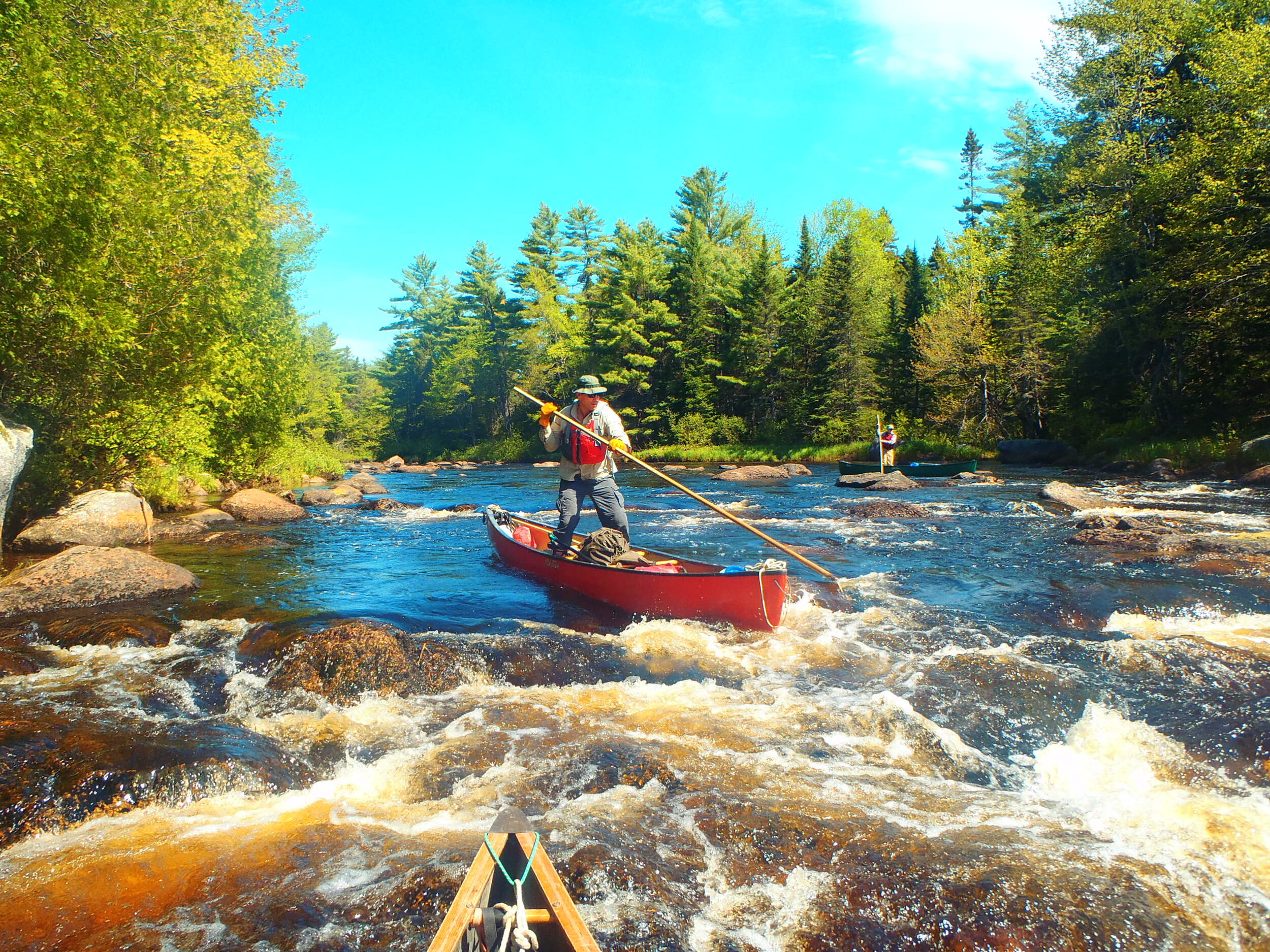
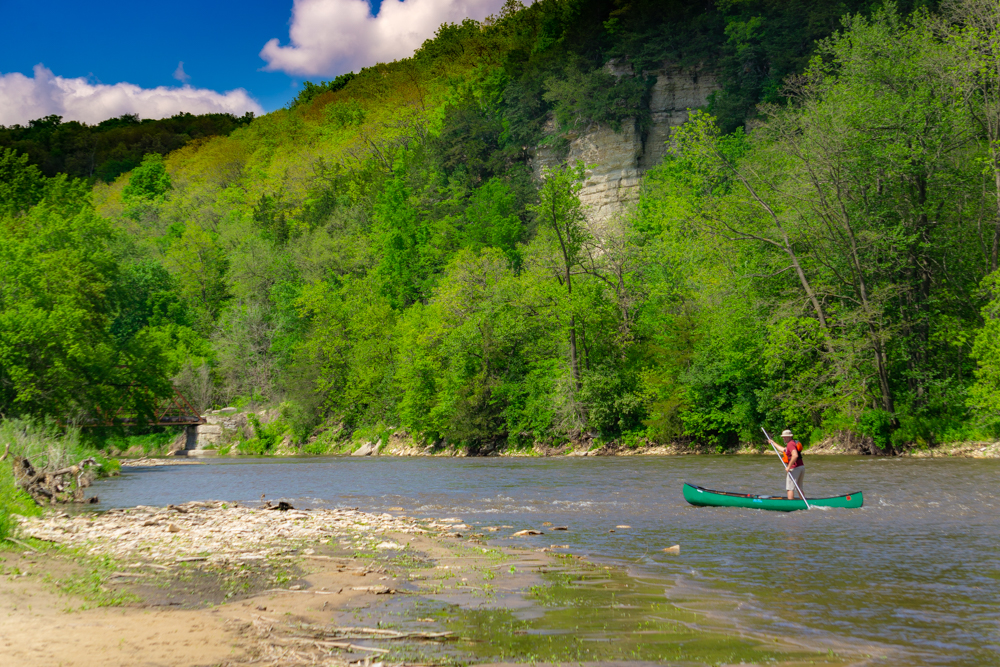



BMP and Sam Larson, winner of the grueling television show, ALONE, paddled a fun-filled and survival skills-intensive canoe trip on Wisconsin’s beautiful Flambeau River. Check out our trip and join us on our next Flambeau paddle!